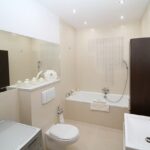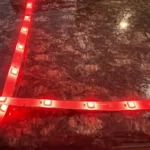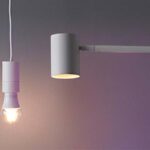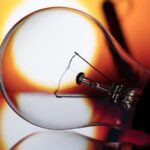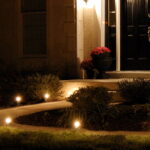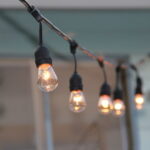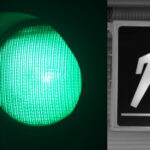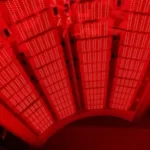Best Color Temperature For Bathroom Lighting: How To Choose
Let’s begin with the question, what is the best color temperature for bathroom lighting?
Three thousand to two thousand Kelvins, which produces bright, clear light, is the ideal color temperature for bathroom lighting.
When styling hair, shaving, or applying makeup in the bathroom, this light is useful. In bathrooms that are only used by visitors, warmer light—around 2,700 Kelvins—is more aesthetically pleasing and improves the atmosphere.
A room’s lighting color has a significant impact on how we perceive it. A warmer color evokes a cozier feeling, whereas a cooler color may make it simpler to see while performing tasks. One of the most important elements in a bathroom is the lighting.
Please keep reading for more details on the ideal color temperature for bathroom lighting.
Table of Contents
What Is The Best Color Temperature For Bathroom Lighting?
Whether you prefer lots of natural light for your zen spa moments or want ambient light to get ready in the morning, color temperature matters. Consider the following color temperature factors before choosing what accent, task, or vanity lights to add to your bathroom.
Warm Vs. Cool
The ideal setting for a relaxing bath is created by warm bathroom lighting options. Cool lighting is preferable when applying makeup in the bathroom mirror. The more like sunlight and the actual environments you spend time in throughout the day your color temperature is, the more they do so. Choose cool lighting for makeup application and warm lighting for spa days.
The color temperature of your bathroom lights may change depending on the mood you want to set. Use warm color temperatures between 2700K and 3000K to create a cozy atmosphere. By doing this, you’ll give your bathroom a cozy, mellow glow that is yellow-toned. Opt for a color temperature between 3500K and 4000K, however, if you want a more contemporary, sleek appearance. With this selection, your bathroom will look cleaner, more spacious, and brighter.
Color Rendering Index
The color rendering index (CRI) of the light source in your bathroom is also crucial. It gauges how well your bathroom light fixtures reproduce color. For bathrooms, a CRI of 80 to 90 is ideal because it simulates a natural white glow. In this manner, the face you see after your morning routine in the bathroom mirror is the one you show the rest of the world.
Red Vs. Blue
The mood is influenced by the color of the bathroom lights. Different colors can set different moods. A bathroom can feel more relaxing by using a warmer color, like red. A room can feel more alive with the use of a cooler color like blue. Without changing fixtures, a multicolor light can create a new environment with just one quick tap on an app.
Read about: Best Led Colours For Gaming
Color Temperature Basics
On a scale from 1,000 to 10,000, color temperature—which describes how a light appears to be colored—is expressed in degrees of Kelvin (K). Lord Kelvin, a British scientist, created this scale.
A light source will appear warmer (or redder) with a lower Kelvin degree and cooler (or bluer) with a higher Kelvin degree. Candlelight, for instance, has a temperature of about 1,000 Kelvin, which is very warm. Bright daylight is about 6,500 K, while household light bulbs are usually around 3,000 K.
The idea that warmer degrees Kelvin produce more heat than cooler degrees Kelvin is a common misconception. Actually, the warmer light radiates more heat than the cooler light.
Any expert in interior design is aware of how a space’s perception can be altered by the color temperature of the lighting.
Light Temperature In Bathrooms
You should aim to have at least three different types of lighting in the bathroom for proper illumination: ambient lighting, accent lighting, and task lighting. A window or a ceiling light are examples of sources of ambient light. A sconce or pendant light’s accent lighting is softer, diffused illumination.
In the home, task lighting is particularly crucial in the bathroom. Task lighting refers to the placement of light sources in designated spaces where illumination is required for particular tasks. A light bar above the vanity in a bathroom, for instance, could provide task lighting while allowing you to see yourself clearly in the mirror.
To achieve various lighting goals, various fixtures types are used.
How To Create A Clean Feel In The Bathroom
The lighting in your bathroom should be bright and a little bit cooler than the lighting in your rooms and hallways. While you don’t want your bathroom to feel like a warehouse, you do want it to feel clean. If you choose lighting that is warmer than, say, 3,000K, your bathroom may end up feeling cramped and small. However, this might be a good option if your bathroom is particularly roomy. Stick with cooler lights if your bathroom is compact and crowded.
All three bathroom lighting options should match each other’s color temperature (Kelvin degree), but not necessarily their brightness. Higher Kelvin degrees are perceived as having a “brighter” look to them, but Kelvin does not measure brightness.
Color Temperature Preferences
It really comes down to personal preference in terms of aesthetics, even though the majority of experts would advise at least 3,000K lights in bathrooms. According to studies, the temperature of the light has a direct impact on how we feel and how much energy we have. Cooler temperatures encourage vigor and alertness, while warmer temperatures encourage relaxation. Consider this when deciding on the color temperature for the various rooms in your home.
Even color temperature is associated with different associations; for example, a very warm light may make you feel as though you are at your grandmother’s house, whereas a very cool light may make you think of the dentist. Higher Kelvin-score lights may be preferred by those who want a modern aesthetic in their home, while lower Kelvin-score lights are preferred by those who prefer a more natural, cozy atmosphere.
Read about: Best Lights For Green Screen
Other Bathroom Lighting Considerations
The intensity of your light sources must also be taken into account. Different lighting levels are needed for various spaces.
The lumen, which measures light output and establishes a light source’s brightness, It is important to recognize that the Kelvin degree of your lighting is completely separate from the lumen, or the light output.
It is also common to confuse the brightness of a bulb with the wattage. A light bulb’s brightness was previously indicated by the wattage number on the package. Brighter bulbs are now able to run on less power thanks to technology. Watts, as opposed to brightness or light output, refers to the amount of power a light bulb consumes.

Common Bathroom Lighting Mistakes To Avoid
Not Including Enough Light
It’s simple to believe that lighting a small bathroom with just one overhead light or one wall sconce above the mirror will be adequate. A single light fixture is frequently insufficient, even in small spaces.
For instance, a light in the middle of the room isn’t in the best place to provide shadow-free task lighting at the mirror, making it challenging to perform some tasks (like shaving and applying makeup). On the other hand, a sconce above the mirror might be great for task lighting, but once the light passes through the shower curtain, it might not be enough for ambient lighting in the room.
How to stay clear of this error:
Simply put, layered lighting is the use of various lighting types to produce a well-lit and evenly-balanced space. Consider task lighting for illuminating particular areas (like desks) and ambient lighting for general illumination., sconces mounted on either side of the mirror above the sink); and accent lighting for areas of interest (such as the cool mosaic tile in your master bath).
- Pro tip: Verify the wet-location listing of every fixture in the shower. Be aware, however, that this fixture may not be rated for a steam shower. If you have a steam shower, be sure to look for fixtures that are especially suggested for that use.
Overlooking Color Temperature And Cri
Alongside information about brightness and wattage, manufacturers of LED bulbs or fixtures will also note the color temperature and CRI (color rendering index).
A light bulb’s or lighting fixture’s color temperature, which is expressed in Kelvin (K), is used to describe the hue of the white light it produces. The color of the light appears warmer (redder) the lower the color temperature of the light source. A light source appears cooler (bluer) the higher its color temperature.
For instance, the color temperature of candlelight, with its warm, reddish-amber hue, is around 1800K. On the other end of the spectrum, noontime on a snowy winter day is daylight. It has a color temperature of about 6500K and is much whiter and bluer in hue. These two examples are separated by incandescent light bulbs. A halogen bulb has a color temperature of about 3000K, whereas a traditional incandescent bulb is about 2700K.
CRI, on the other hand, is a measure of how true-to-life a light source renders color when compared to a full spectrum source of the same color temperature. Have you ever entered a space lit by an old fluorescent bulb and thought everything appeared ill-fated or off-balance? A light source with a low CRI (like those old fluorescents) won’t accurately render colors, dulling or tinting the colors in the space oddly.
Choosing a low CRI light fixture for a bathroom can make colors look unnatural, which makes some bathroom tasks like applying makeup challenging. Selecting a light source with an extremely high or extremely low color temperature can also give objects a blue or amber tint, making it difficult to see colors accurately and having an unintended impact on the room’s appearance and ambiance.
How to avoid making this error:
Learn how light appears at various color temperatures. Despite the fact that everyone’s color preferences are different, most people choose light in the 2700K–3000K range for their homes because it is cozy and familiar.
Light around 2700K tends to feel cozier and warmer, and it flatters skin tones and warmer color schemes. Light around 3000K reads as more of a neutral white light and tends to be more flattering to cooler color palettes due to its brighter, crisper feel. View these various color temperatures in person to determine which you prefer.
Consider how you (and others) will use this particular bathroom after becoming familiar with color temperature. 2700K might be the ideal choice because the most crucial role of a powder room may be to create a warm atmosphere for visitors as they wash their hands or check their makeup. The master bathroom, on the other hand, might benefit from 3000K to allow for accurate color reproduction when applying makeup.
Additionally, pay attention to the light source’s CRI. On a scale of 100, with 100 representing the highest possible score, CRI is evaluated. Ensure the light fixture has a high CRI by looking for CRI information close to the color temperature information of an LED bulb or fixture: 80+ is good, 90+ is great, and 95+ is excellent.
Dismissing Dimming
Bathrooms are frequently multi-purpose rooms, making dimmable fixtures an absolute necessity.
A bright bathroom can interfere with circadian rhythms when it’s time for bed and when you need to use the restroom quickly in the middle of the night, even though a vanity light set to its maximum intensity is ideal for primping and shaving in the morning.
How to keep from making this error
For your bathroom lighting, you should seriously consider a dimmer. Bonus: It can reduce energy use and improve ambiance.
- Pro tip: You can avoid hassles by speaking with an informed lighting consultant. (Our lighting professionals are always happy to assist.)
Ways To Choose A Bathroom Color Temperature
If you’re looking for a great bathroom color temperature, you should think about the decor in your current or future bathroom.
Bathroom Decor
What mood would you say your bathroom design conveys? Is the style more transitional, traditional, modern, or contemporary?
These patterns are all effective in particular color temperatures of lighting.
Wall Color
Our choice of wall color can have an impact on the bathroom because light reflects off of surfaces. When testing different color temperatures, it is best to do so if at all possible.
You’ll most likely have white or off-white walls. Of course, this is a color that is always used in bathrooms and is compatible with the majority of light color temperatures.
But make sure to test various color temperatures if your walls are a darker shade of gray or taupe, or even if they are lighter.
Colors can be brought out by light. When colors that don’t typically go together are combined, you may occasionally notice a blueish and pinkish hue.
Use a photography fill lamp to test various LED color temperatures against your paint color to see which one works best.
Your walls’ shade can fluctuate throughout the day.
- Natural light from the north may be somewhat blue throughout the day. (Use warmer paint colors)
- Natural light may be very bright in a south-facing room. (Consider using darker paint colors)
- East-facing homes may experience cooler afternoon light. (Use a warmer paint color)
- West-facing rooms may receive more vibrant afternoon light. (Use a cooler paint color)
Cabinet Color
This is a significant issue, and in modern times, we’re using built-in storage areas and vanity cabinets in inventive ways.
- A cool white light color temperature enhances the appearance of white cabinetry. The color temperatures of cool white lights can range from 3500K to 5000K.
- The earthy tones and wood grains of wood cabinets are best accentuated by a warmer color of light. The temperature range for warm white lighting is 2700K to 3500K.
Got textured, painted, or thermofoil cabinets? This may give you access to a wider range of color temperature choices, depending on the color or texture.
Any temperature higher than 5500K–6500K will typically be too sterile and blueish. Therefore, it will be best to keep it below 5000K.
Finish Fixtures
Pay close attention to how your fixtures are finished. Each and every brass, chrome, brushed nickel, oil-rubbed bronze, black, and finish has an effect.
In contrast to brushed nickel, which has more warm tones, chrome has a more contemporary, sleek appearance.
Naturally, these both influence the lighting design and the overall design in a subtle way.
The Task Being Done
Bathrooms are not created equal.
Depending on where it is in the house, you might have a master bath (or primary bath), a guest bath, a half-bath, or even a quarter-bath.
We perform slightly different tasks in each of these, so they are not all equal.
In my opinion, you can relax a little bit on the color temperature requirements in non-master bathrooms. The main bathroom requires proper lighting because it is typically bigger and has more cabinetry.
CRI (Color Rendering Index) Is Essential
The Color Rendering Index, also known as CRI for short, is a rating that can reach a maximum of 100.
It measures how colors appear under a light source when compared to natural sunlight. With a higher CRI number (90+), you can visually see differences in colors.
It is frequently found on the product fact label for light fixtures or on the manufacturer’s specifications.
The CRI, in short, brings out the colors of objects that are near the light source and enhances their hues.
For example, the yellow banana and the red apple in a grocery store appear more yellow and more red when using a superior quality light fixture paired with a high CRI number.
For a light to be of high quality and accurately reflect its assigned color temperature, the color rendering index is essential. For an accurate color match, a CRI of 90+ is ideal.
Therefore, if a light bulb is used with a CRI of 80 or lower, the color temperature of the bulb won’t be as important.
Conclusion
What color temperature is ideal for lighting in bathrooms, in the end?
Do you now comprehend what color temperature is ideal for bathroom lighting? Please leave a comment if the best color temperature for bathroom lighting is causing you any issues. I’ll provide a brief response to your query. Please bookmark and subscribe if you enjoyed the article.
I sincerely appreciate your reading.




![9 Best Boat Dock Lighting Ideas In 2022 [Updated]](https://www.totallylight.com/wp-content/uploads/2022/09/9-Best-Boat-Dock-Lighting-Ideas-In-2022-Updated-150x150.jpg)
